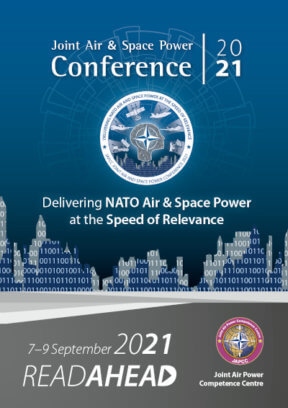Outer Space: A Warfighting Domain
Space is vital for state security and scientific achievement. Moreover, Space-based capabilities are an integral part of our modern life and they are an essential component of nations’ (or national) military power because they provide efficiency and effectiveness to military operations. However, a new schema looms with increasing rivalries between Space powers; militaries use more satellites to enhance their forces and one can observe an acceleration of the development of counter-space capabilities.1
Outer Space represents a strategic and operational area,2 thus becoming a warfighting domain,3 where states have to be able to foresee, compete, deter and respond in a challenging security environment characterized by great power competition.4 Indeed, a diversity of actors exist, and some states such as the United States, China, Russia, and India have demonstrated that they can be ‘intimidating’ in Outer Space by conducting acts of espionage or carrying out Anti-Satellite (ASAT) tests. In fact, these inimical acts have become a reality. ASAT tests conducted by China in 2007, the United States in 2008, India in 2019 and Russia in 20205 perfectly illustrate this trend. In 2017, an act of espionage was conducted by a Russian satellite on Athena-Fidus, a French-Italian dual-use communications satellite.6 It is now obvious that some states have developed systems designed to move close in order to observe and listen to Space systems of other countries, which poses serious questions in terms of security. In particular, the United States has developed a ‘Counter Communications System’ which is a deployable ground-based system that can jam signals from single satellites in geosynchronous orbit.7 The system will allow the US Space Force to disrupt, deny, degrade, or destroy an adversary’s Space systems, or the information they provide, which may be used for purposes hostile to US national security interests.8
With this in mind, a sort of ‘de-sanctuarization’ of Outer Space can be observed, depicting possible new areas of conflict.9 Currently, satellites are used to conduct military operations and Space systems have become strategic targets that can be hacked or jammed to weaken an adversary. Thus, Outer Space is becoming an environment like Cyberspace, Land, Sea or Air, where it is possible to conduct military operations.
In this new context, some states are establishing ‘Space Command Centres’, such as the United States Space Force, or the Commandement Militaire de l’Espace in France, to manage and govern Space military operations in Outer Space. Similar organization exists in Russia with the Russian Aerospace Forces,10 in China with the Chinese programmes under the control of the People’s Liberation Army (PLA),11 and in India.12
Implementation of National Space Defence Strategy: Focus on France
Outer Space is an area where state domination remains very significant, and no nation wants to be overtaken by another. Ensuring the availability of Space capabilities is fundamental to establishing and maintaining military superiority in Outer Space. In fact, states want to secure their vital interests in Space from both technological and national security policy perspectives. Indeed, they are developing new Space defence policy and strategy. For instance, France introduced in 2019 its ‘Space Defence Strategy’,13 from its Ministry of the Armed Forces, outlining the notion of ‘active defence’ linked to the principle of self-defence. According to the strategy terms, ‘active defence’ means to preserve freedom of access to and action in Space, as well as to discourage any act of aggression, to detect hostile acts, and to neutralize the threat by running away, jamming, interference and dazzlement. This notion of ‘active defence in Outer Space’, relatively novel in European States’ Space strategy, should be addressed in the framework of an international forum on Space security, and could be introduced as a new principle of international law. The French Strategy deals also with the notion of systems resilience through a distributed architecture, as well as consolidated and strengthened Space-based facilities.
New threats against Space assets and ground stations are emerging, and as a result France must reinforce its deterrence capabilities, especially against acts of spying as mentioned above. Recently, France launched a super high-resolution military satellite, CSO-2 (Composante Spatiale Optique), the second of the CSO constellation. The CSO military observation system brings a level of resolution and acquisition capacity unmatched in Europe, allowing France and other nations to increase their surveillance and intelligence capabilities, and France to have a greater autonomy in matters of situation assessment and decision-making.14 For the purpose of national defence, and particularly to adapt its military Space governance, the country intends to equip its next generation of satellites, such as the Syracuse Constellation which is deployed for military communications, with cameras, machine guns and lasers, in order to identify and to tackle threats in Outer Space.15 In addition, Space Traffic Management (STM) and Space Situational Awareness (SSA) need to be improved, especially to detect hostile acts and to defend against them.16 Indeed, managing Outer Space requires knowledge of military actions that take place in orbit.
As of now, Space is an essential domain for the armed forces and represents a significant tool for operational support. Thus, it is of utmost importance that the French government, with the Ministry of Defence, implement a clear Space strategy in accordance with the existing international legal framework, but also by adapting its domestic legal framework to provide the armed forces with Space-operator status, allowing them to independently operate satellites.
In this context, international cooperation has to be extended between Space actors and Space operations for the purposes of the better evaluation of threats affecting Space capabilities, and to enhance military Space operations. Hence, one of the main challenges for Space security rests on the system of verification of Space technology17 and activities in Outer Space, especially given the fact that a system should be able to detect if there is a ‘militarily meaningful’ violation.18 According to a UNIDIR study, ‘verifying the on-orbit actions of a Space object is easier than verifying its functions’.19 This is particularly relevant for the development of national defence Space strategy and the issue should be further discussed within international Space security forums.
On one hand, there is a need to maintain Space autonomy and superiority, and on the other hand, the necessity to ensure Space stability in cooperation with persistent presence in Space with the objective to deter aggression and to provide for safe transit in, to, and through Outer Space. French strategy underscores the fact that novel Space missions are disrupting the existing equilibrium, and consequently, it is necessary to adapt international and domestic legal frameworks to match these new challenges. It needs to implement significant best practices and standards in order to avoid misunderstanding and misperception while conducting military operations in Outer Space.
Towards a Novel Space Security Diplomacy
With this in mind, it is necessary to reconsider Space security diplomacy within international organizations concerned with Space security, in particular NATO.20 The principle of ‘freedom of action’ in case of threats in Outer Space, presented in various national Space defence strategies,21 has to be developed in accordance with the rules of law including the five United Nations Space Treaties.22 First, it is necessary to recall that Space activities have to be carried out in accordance with international law according to Article III of the 1967 Treaty on Principles Governing the Activities of States in the Exploration and Use of Outer Space, Including the Moon and Other Celestial Bodies (OST), and that Article IV.1 of the OST does not require a complete demilitarization of Outer Space.23 The current regime is quite permissible concerning military use of Outer Space as it does not completely forbid hostile acts.
Since there is no agreement on definitions in Space security24 for terms including ‘Space weapon’, ‘weapon in Space’, ‘threat’, ‘hostile intent’, ‘hostile act’, and ‘self-defence’, these and some others such as ‘weaponization’ and ‘militarization’ remain ambiguously used in international debates. One of the main issues is to figure out whether a ground-based weapon directed towards objects in Space might be considered as a Space weapon. Moreover, reaching internationally acceptable definitions in the field of Space security has become more challenging with the development of new Space activities including active debris removal and satellite servicing systems, due to the nature of their dual-use core capability.25 The emergence of new threats could compromise States’ freedom of access and action. Hence, the law is not complete, but it is building gradually by taking into account the new technological development and States’ practices. So, law has a significant role to play outlining terms in the field of Space security. Consequently, further discussions within the Prevention of an Arms Race in Outer Space (PAROS),26 through the United Nations General Assembly and the Conference of Disarmament, are crucial in order to develop a common approach and harmonization in the field of Space security because States are reinforcing their military capabilities and strategies in Outer Space so as to be able to respond in case of hostile acts.
Concluding Remarks
New threats are appearing in Outer Space, and in their wake, States are developing more active and offensive Space defence strategy and policy with the aim of maintaining their autonomy and their superiority in Outer Space. In this context, it is of utmost importance to reinvent a Space security diplomacy both inclusive and collective, strengthened by norms.27 Indeed, it is necessary to rethink Space security and collective security. Last but not least, a common understanding on the essential terms in Space security is needed in order to support the development of appropriate Space defence strategy.












